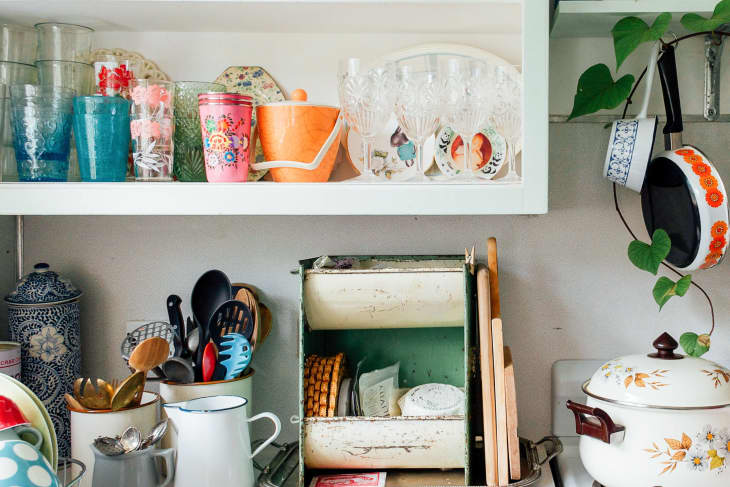Why I Don’t Worry About Keeping Things Neat and Tidy
I like to say my apartment is shabby chic. But some of my more meticulous friends will tell you it’s just shabby.
They may have a point, because my home is nothing like those magazine or online images of spotless interiors with gleaming surfaces — nor do I want it to be. To me, those pictures do not represent the perfect interior, but a sterile one, lacking the human element. Yes, even those pictures with a perfectly styled blanket draped over a chair and a single coffee mug on the table. Mismatched towers of cookbooks and novels on a side table, a wine glass in the bathroom, crumbs on the kitchen counter — these are the things that give a space character and make it feel lived in.
A Case Against Dusting
We humans are imperfect beings; we make messes and literally create dust from our bodies, so why not embrace these things instead of exhausting ourselves fighting them? I let dishes pile up in the kitchen and piles of mess accumulate, and I never dust. Of all household activities, dusting is the most pointless. It’s a losing battle, because dust is everywhere, floating around in the atmosphere, settling on surfaces, infiltrating upholstery. Most dusters just unsettle the dust, moving it around and stirring it back up into the atmosphere again.
Sure, if you put enough time and effort into it, you might get close to those flawless, staged images. But for every moment spent cleaning, life is happening. I would rather be drinking coffee with friends, swimming in lakes, or having a picnic in the park. When it comes to housework, I don’t aim for perfection. Good enough really is good enough, and most of the time, that means neglecting the dusting.
Approval from the Design World
British designer Rachel Ashwell, who coined and defined shabby chic, also found a disparity between perfect interiors and real life. She created the look in the 1980s when she was a busy mother and needed a style that was practical and comfortable as well as beautiful. The shabby chic look, which is characterized by distressed furniture, takes pleasure in the worn, the aging, the imperfect.
Likewise, the ancient Japanese aesthetic Wabi-sabi focuses on beauty that is impermanent, incomplete, and, again, imperfect. Leaving dust on a surface is an acknowledgement of the reality of life itself; the fact that nothing lasts, nothing is finished, and nothing can be perfect. Plus, there is beauty and surprise to be found in the accumulation of mess.
Embracing the Mess
People doodle in the dust on my shelves, misplaced objects are seen anew, the pile of clothes on the floor becomes a living art installation (an ever-changing mixture of textures and colors) — if you let your space breathe without trying to control and force it to be a particular way, it will come alive, change, and evolve.
For those of you who are concerned about hygiene or dust allergies, research has shown that too-clean environments actually cause these allergies. Children who grow up in less-than-perfect households — ones with pets, dust, and bacteria — develop stronger immune systems.
And if you are worried about what visitors will think, don’t be. Everyone who comes to my place feels at ease. They don’t worry about spilling juice, smashing a mug, or putting a glass on the coffee table without a coaster. The fact that my space is not perfect, and that I, by extension, am not perfect or pretend to be, means that people can act naturally. This leads to more authentic conversations and genuine relationships.
After all, a home is a space where you should truly be able to be yourself. Instead of blindly doing what our mothers and grandmothers told us to, following the latest trends on the internet, or trying to make our spaces look like those in magazines, we should delight in our lives, revel in our messy human selves, and dance in our dust.
Who’s with me?
